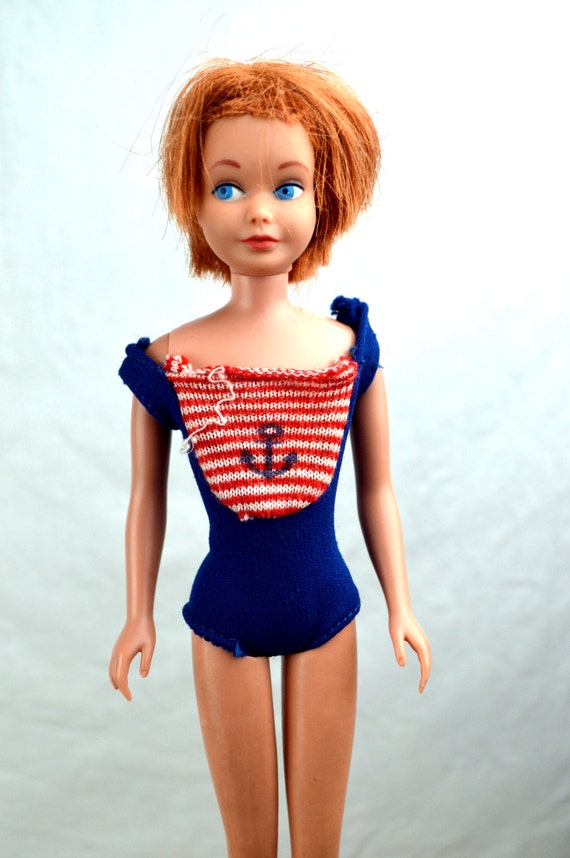
But she’s not a sulky, antisocial brat who can’t put down her phone. Now rocking a colored streak in her hair, Skipper is obsessed by her smart gadgets and all things technological. In 2009, Skipper’s beachy, party girl vibe was toned down in yet another redesign. The long checklist of the Skipper brand in the Wikipedia article is defined by the traditional preoccupations of popular high school girls–their figures, clothes, sports, and boys- Funtime Skipper, Sunsational Malibu Skipper, Beach Blast Skipper (shown at the left), Olympica Skipper, Hot Stuff Skipper, Great Shape Skipper, Teen Fun Cheerleader Skipper, Dream Date Skipper, Sleeping Beauty Skipper, Wet ‘n’ Wild Skipper, Pizza Party Skipper, Phone Fun Skipper, Disney’s Peter Pan Flying Tinker Bell (played by Skipper), and School Going Skipper (available only in India). The sweet teenager of the 1970s seems to have been pretty well erased in the redesigns of the 1980s and 1990s. Cute without being overtly sexual, Skipper is the perfect daughter, gal-pal, friend, and student. Her new look is approved by her best friend Ginger before they rush off to class on the first day of school. She works so hard that her mom proclaims, ”Skipper, you’re growing up to be a mighty big help to me.” But her friend Brian, whom she waxes at ping pong without disarranging a hair in her new do, notices something different about her, but can’t put his finger on it. To repay her mom for all the new clothes, Skipper agrees to help out at the Roberts’ backyard barbeque the next weekend. Growing up doesn’t change her, thank heaven. Except for the merest suggestion of swelling on her right side in a few illustrations, she is almost, as was said in less enlightened times, as flat as a board.

Incidentally, none of the illustrations show that the long-waisted and impossibly leggy Skipper has filled out. Mother, who instantly sizes up the situation, proposes that they go shopping the next day to address the crisis in the closet. Experimenting with hairstyles for a new look for the first day of school, she discovers that her clothes don’t quite fit. The Mattel/Whitman paper doll/coloring book of 1978, which was published after the dolls were discontinued in 1977, presented Skipper’s maturation in a much more indirect and wholesome way. In light of the controversy about the gimmick the newspapers and parenting magazines stirred up, giving Skipper a friend, Growing Up Ginger, in 1976 was not an especially astute move on Mattel’s part. Hence the slogan on the box, “Two dolls in one for twice the fun.” The process of transforming the little girl doll into a willowy teenager, was demonstrated semi-graphically on the marketing videos, which are easy to find on the Web. Rotate the doll’s left arm counterclockwise and the torso grew an inch and petite breasts sprouted on the rubber chest. Mattel decided in the mid-1970s that eight-year-old Skipper had to change and the new Growing Up Skipper doll, designed to bloom before its owner’s eyes, hit the market in 1975. Created in 1964, the doll was supposed to be the answer to fans requesting a mommy Barbie as a better role model for young ladies than the sexy career girl.


Skipper has been an enduring character in the plastic-fantastic Barbie world. One shows that the gender expectations for Skipper, Barbie’s little sister, in the books did not quite align with the toys and accessories rom the very beginning. Although the actual dolls are out of scope for the Cotsen collection, it does have a handful of the authorized books about them. Mattel’s Barbie dolls project toxic stereotypes that have shaped American girls’ ideas of body image since the 1960s.


 0 kommentar(er)
0 kommentar(er)
